Conflicts of the Heart in the Films of Ingmar Bergman
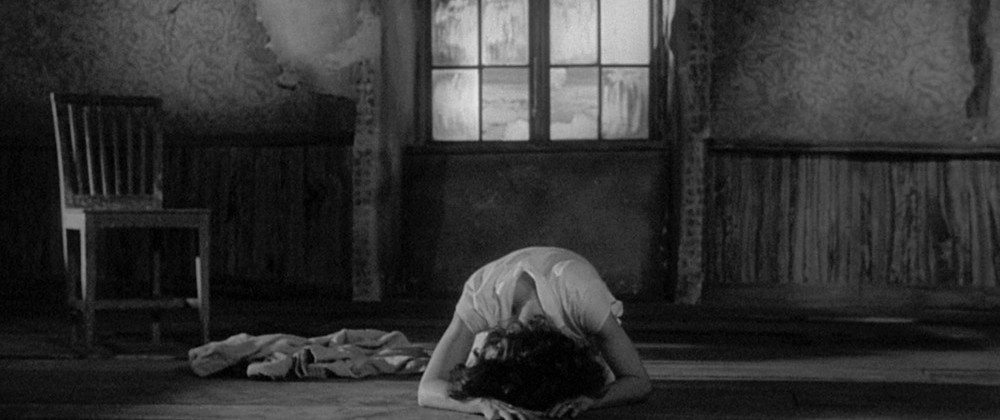
…the young man or woman writing today has forgotten the problems of the human heart in conflict with itself which alone can make good writing because only that is worth writing about, worth the agony and the sweat.
– William Faulkner: “Nobel Lecture”
In the context of Bergman’s films, Faulkner’s statement that young writers have “forgotten the problems of the human heart in conflict with itself,” is a broad reflection of the emphasis made by contemporary filmmakers on the technicalities in the making of cinema rather than focusing on the emotional lives of characters; indeed, they have ignored the conflicts of the heart which makes for great art because it is “worth the agony and the sweat” (Faulkner). If viewers come to cinema it is not merely because they wish to be mindlessly entertained or impressed by the complexities of the technology used to bombard the audience but also because they seek solutions to emotional and spiritual questions that occupy their lives on a daily basis. Bergman’s dramas revolve around the intricate motives that dominate emotional behaviour; the life lived within the body as a mind that remembers and a soul that suffers the hurt which is proof of one’s humanity; the broken self masquerading as a complete person in broad daylight while ravaged by dreams at night; the unending ache struggling to find the right words that can provide relief to pain; the intolerable weight of one’s own consciousness of being oneself – in the end we are private individuals who are desperately in need of another person while morbidly afraid of losing our selfhood. Thus, the contrite father in Through a Glass Darkly (1961) admits his guilt to his schizophrenic daughter Karin for having abandoned the latter in order to explore the world on his own terms. He is aware that his pursuit of an independent life had meant not taking responsibility for the “mental illness” of both the wife and the daughter. In her near madness the daughter envisions God as a spider trying to force himself on her. Unlike the other characters who are in the position to make a choice, the daughter’s world is a deterministic one. Deprived of the possibility of changing it, Karin’s world is bereft of hope. If the loss of a will to be herself has irrevocably driven Karin into madness, it is left to others in the family to make the right kind of a choice in how they relate to her. Through equating love with God, the father is able to come to terms with his emptiness and despair; he further tells Minus, his son that it is “like a reprieve from a death sentence.”
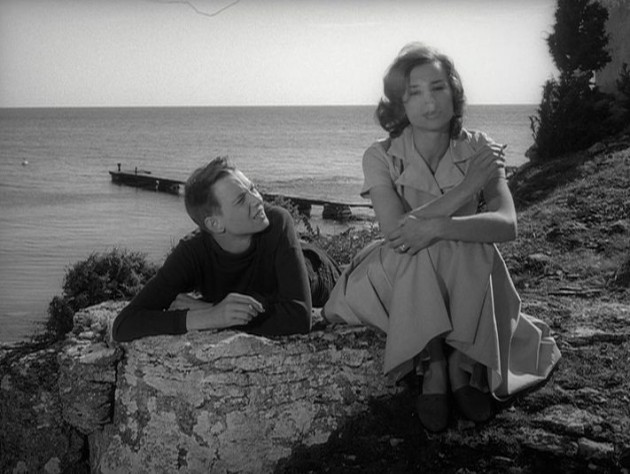
Through a Glass Darkly
The “death sentence” is a reality because we are born in order to one day die. For Bergman, only love can provide a “reprieve” and enable us to embrace life and make living worthwhile. Love is dead when people cannot talk to one another in a way that they could make themselves understood. Each one of us is deep down a semblance of Karin caught in her own private world, torn apart from within and tragically alone, betrayed and left to become insane with grief by everyone else. Our sense of being normal is against the possibility of descending into consuming pain; we cling to an idea of normalcy afraid that we could become Karin unable to cope with the emotional anguish. We need to deal with betrayal just as much as we must deal with the fact that we could in turn betray those who vest their faith in us. Love exists against the imminent possibility of betrayal; it preserves us from the temptation to betray as much as it secures us in the face of betrayal.
In Summer with Monika (1953) when Harry and Monika escape from their drab lives to spend time together in a boat; the stunningly beautiful sea and sky converging in the landscape makes the audience feel the warmth of the bodies lost in ecstasy far away from the snares of reality. The audience is given a glimpse into that unbearable lightness where being slides into non-being and the meaning of life is nothing but pure, untainted joy. It is a memory of a moment that comes back to Harry at the point when Monika leaves him with a baby to take care of. Like love, beauty exists to make pain that comes with loss palatable. In the course of their romance when Monika tells Harry that she is pregnant, he responds, “We have to go back so I can start working. You need proper food.” Monika, half-seriously answers, “No, I’m not going back. I want summer to go on just like this.” The eternal summer is a feeling of timelessness that comes packaged with the ecstasy. Therefore, Harry’s suggestion that they “have to make something real out of our lives” is bound to fall on deaf ears. The real was how things were before the summer; the real follows the end of the summer. Unreal though the summer may seem, nothing is as beautiful as the unreality of escaping from the “hell” that Sartre calls “other people” (45). Bergman recreates a summer of eternal love which is aesthetically pure but one that cannot bear the strain of reality. It is beautiful because it has a fantasy-like quality and fantasies have the power to mock reality. By definition, reality rejects illusion; but, without illusion, reality reduces the world to objects at once, mediocre and colorless, without the presence of the day-dreaming subject.

Summer With Monika
Interestingly, cinema itself is anything but reality because it relies on the day-dreaming subject, the subject who through imagination and interpretation, bridges the space between truth and fiction. You cannot have real cinema or cinema that comes close to real life because it would defy what films are supposed to stand for:
The artistic image is always a metonym, where one thing is substituted for another, the smaller for the greater. To tell of what is living, the artist uses something dead; to speak of the infinite, he shows the finite. Substitution . . . the infinite cannot be made into matter, but it is possible to create an illusion of the infinite: the image (Tarkovsky 38).
In one sense, cinema, like any other art form, relies on the image for appropriating reality to make it accessible to the audience. In another sense, cinema and reality are placed at opposing ends of the spectrum working at cross-purposes with each other. Political cinema, documentary, historical cinema or biographical film – in the end it has to be cinema for illusion’s sake. Bergman’s cinema has no illusions as far as cinema as illusion is concerned. “The rhythm in my films is conceived in the script, at the desk, and is then given birth in front of the camera…Filming for me is an illusion planned in detail, the reflection of a reality which the longer I live seems to me more and more illusory” (The Magic Lantern 73). How can we speak of the reality of life except through a medium that essentially celebrates unreality! Illusion is not a metaphor to describe life; illusion is life and cinema is proof of it. Cinema dwells on as well as reconstructs for the benefit of the audience the ephemeral quality of what we perceive as the real world located in a specific time-frame; as Tarkovsky notes,
For the first time in the history of the arts, in the history of culture, man found the means to take an impression of time. And simultaneously the possibility of reproducing that time on screen as often as he wanted, to repeat it and go back to it. He acquired a matrix for actual time. Once seen and recorded, time could now be preserved in metal boxes over a long period (theoretically for ever). (62)

Summer With Monika (Harriet Andersson)
In the process of taking “an impression of time” the illusion on the screen becomes not just a representation of life, but life itself in all its variety reproduced as countless reflections of individuals caught in private struggles. It is not illusion in a conventional sense that means unreal or false, but cinematic illusion which is about images in a state of perennial movement coming as close as possible to how we look at life moving around us. What makes cinematic illusion much more engaging than the normal perception of life is that as audience we experience the creative power of daydreams as if revealed on the screen. Cinema makes us conscious of the fact that a life without fantasies is neither possible nor desirable.
In a lecture on “Cinema’s Artistic Suicide” delivered in May 1946, Bergman had warned that faithful adherence to the conventions of realism would spell a moribund future for the industry. Salvation, he told the Uppsala student audience, lay in recapturing the spirit of fantasy that had characterized the silent era: film should build on the tradition “started by Georges Méliès, continued by the Swedes Sjöström and Stiller, and resumed by Chaplin, Disney, and the best of modern French cinema, particularly Carné” (Gado 38-39)
The recognition of cinema as art form dedicated to the pursuit of illusion is central to understanding Bergman’s cinema. In a summation to an entire career, Gustav Adolf speaks for Bergman as the latter’s persona at the end of Fanny and Alexander (1982) making reference to both drama and life as if they were one and the same thing:
Damn it all, people must be intelligible, or we don’t dare either to love them or speak ill of them. We must be able to grasp the world and reality, so that we can complain of its monotony with a clear conscience. Dear, splendid actors and actresses, we need you all the same. It is you who are to give us our supernatural shudders and still more our mundane amusements. The world is a den of thieves and night is falling. Soon it will be the hour for robbers and murderers. Evil is breaking its chains and goes through the world like a mad dog. The poisoning affects us all, without exception…No one escapes… (Fanny and Alexander 207-8)
It is a sort of a Shakespearean moment; the Ingmar Bergman-persona speaking through Gustav is somewhat of a Prospero at the end of The Tempest who decided to relinquish his magic wand; the magician who must finally live the life of a normal person, not very different from the many characters in his films for whom the definition of life lies in the act of living and nothing else. We could perhaps live our lives without wars and famines and man-made evils; but, we need “supernatural shudders” and “mundane amusements” to know that we have existed. Cinema offers us insight into the nature of the mystery of our existence while adding to that mystery a sense of the aesthetic without which we cannot take joy in simple things like food and friendship. It is not the promise of an idyllic world free of conflicts which is something that could never happen. The illusion is not free of evil; a person may go completely crazy in a dream. That is what happens to the psychiatrist Dr. Jenny Isaksson who starts having breakdowns in which she relives a painful past that is agonizingly real in the present. The dramatic moments of real life are less dramatic than in cinema. In the sequence of images that come to haunt Dr. Isaksson, she meets her parents, a meeting that reduces her to the desperation of a child seeking love and approval. “I was just a child,” she poignantly tells her parents, “I didn’t understand but still, still you shut the door, and I stood there and burned with guilt! I stood there always at fault and guilty!”
In the interior world, a person is never more than a child. He or she seeks to be cared for unconditionally the way children want to be accepted for who they are. The reality of life is adulthood which only means leaving the memory of the child behind forever. “I am almighty. Have you forgotten?” the “voice” tells Alexander (Fanny and Alexander 192). With an unconventionality that is characteristic of a ten-year old, Alexander responds, “I haven’t forgotten but I don’t believe it, because you are always harping on being almighty. If you really were almighty it would be so obvious that neither you nor the bishop would have to prove your omnipotence every Sunday” (Fanny and Alexander 192). A child is not caught up with obsessions related to power; a child could however be caught up with the need to show off to adults what makes him or her different. A child seeks attention and approbation at one and the same time. Thus, Bergman writes of himself: “A contact-seeking and fantasy-obsessed child had been rather quickly transformed into a wounded and sly daydreamer. But a daydreamer is not an artist except in his dreams” (Images 28). Cinema’s agenda is to reproduce the life of a daydreamer in his or her dreams. At the end of Fanny and Alexander Emilie offers Helena a copy of August Strindberg’s A Dream Play suggesting that that there are parts in it for both of them. Bergman refers to it in Images: My Life in Film: “In the quiet after the celebration party, Emilie awakens Helena Ekdahl’s theater ambitions with a newly published copy of Strindberg’s A Dream Play” (198). The ending reference to Strindberg is interesting because like Fanny and Alexander in some sense A Dream Play takes the image or the dream to its logical conclusion. A particular piece of dialogue between the poet and Indira’s daughter illuminates the nature of the dream that is at the heart of art whether as drama or as life.
POET. I seem to have been through this before…
DAUGHTER. I too!
POET. Perhaps it was a dream?
DAUGHTER. Or a poem?
POET. Or a poem!
DAUGHTER. Then you know what poetry is!
POET. Then I know what dreams are!
DAUGHTER. It seems to me we have said these words before, somewhere else.
POET. Then you can soon work out what reality is.
DAUGHTER. Or dreaming!
POET. Or poetry! (Strindberg 233)
The moments of pain like the moments of joy dissolve into a realm of non-certainty at the point that the dream sequence comes to an end. Reality, dreaming and poetry are fundamentally identical in the sense that they cannot be distinguished from one another. Strindberg, no less than Bergman, relies on the notion of illusion, where the human experience of reality is shaped by memory and reinvented as narrative. When the poet wonders if he has “been through this before” or if it “was a dream” he is speaking of the selective nature of memory that chooses events and turns them into images. When the daughter suggests that it could be a poem, since poetry is about images in words functioning with a dream-like playfulness, a link is established between reality that is reconstructed through images and the act of dreaming. At the end of the novel Swann’s Way, the narrator reflects on “how paradoxical it is to seek in reality for the pictures that are stored in one’s memory, which must inevitably lose the charm that comes to them from memory itself and from their not being apprehended by the senses.” (Proust 579). The paradox lies in the fact that memory triumphs over the senses; we don’t experience life as if it were happening in the here and the now but through poetic images that capture reality in pictures. We are reliving the past in the very moment that we imagine the future opening itself to the arrival of the present. Dreaminess is intrinsic to the movement from the past into the future and the poet whether as a dramatist like Strindberg, a novelist like Proust or a filmmaker like Bergman or Tarkovsky in his work retains the poetic aspects of the dream concealed within reality. The image is both real as well as a dream because it is an impression of the real that takes concrete shape in the poet’s imagination. Thus the narrator in Swann’s Way adds towards the end of the narrative:
The reality that I had known no longer existed…The places we have known do not belong only to the world of space on which we map them for our own convenience. They were only a thin slice, held between the contiguous impressions that composed our life at that time; the memory of a particular image is but regret for a particular moment; and houses, roads, avenues are as fugitive, alas, as the years. (Proust 579-580)
Through the “contiguous impressions” the artist as filmmaker gives us a vision of reality with the flavor of a dream. It is in film as form that the blurring of art and life takes place at its best. The technology of film takes fantasy to the borderlands of reality beyond the realms of the intellect.
It was obvious that cinematography would have to become my means of expression. There I made myself understood through the language that I lacked, through music I had not mastered, and through painting which left me cold. Suddenly I had an opportunity to communicate with the world around me in a language that literally is spoken from soul to soul in expressions that, almost sensuously, escape the restrictive control of the intellect. With all the pent-up hunger of the child I was, I threw myself at my chosen medium and for twenty years I have tirelessly, and in a kind of frenzy, supplied dreams, sense experiences, fantasies, insane outbursts, neuroses, cramped faith, and pure unadulterated lies. My hunger has endlessly renewed itself (Images 28).
The “hunger of the child” is a hunger for expression, to narrate his or her fantasies embellished with details which are nothing but fictions in the eyes of adults. The last great narrative is told through the eyes of Fanny and Alexander because they are children and like all children they seek to be trusted without being judged. Emotional suffering is real and our private lives are crippled by haunting images from the past, of our vulnerability in the face of aggression, of our desperation and loss of dignity at the point when we were forced to confess our weaknesses while expecting that in return we would be given love and approval. If the greater part of the drama of human pain is happening in the mind it is the function of art to give form to that suffering of the mind. The insight that mental suffering can be staged is as old as Greek tragedy; but, cinema transcends the suffering and moves into the inner terrains of the mind, a tremendous feat that Shakespeare’s genius accomplishes through poetry and drama. There is something intensely surreal in how we attempt to be ourselves despite the fact that we must be someone else in how we relate to people around us. In the process of turning into someone else, the confrontation with “lies” becomes harder than facing the truth. Thus, Andreas will express his helplessness in The Passion of Anna (1969) when he tells the eponymous heroine, “I know it’s you, but I can’t reach you.” The confession precedes the scene when Andreas forcefully chopping wood could almost have killed Anna with the axe as an expression of the rage consuming him. The audience is prepared for the violent and physically abusive moment when Andreas speaks of his inner turmoil before the final break up with Anna:
Can one be sick with humiliation? Or is it a disease we have all caught? We talk so much about freedom. Isn’t freedom a poison for anyone who is humiliated? Or is that word a drug, which the humiliated use so as to be able to endure? I’m past living with this. I’ve given up. I can’t stand it anymore. The days drag by. I’m choked by food, by the shit I expel, the words I say. The daylight that shouts at me every morning to get up. The sleep which is only dreams that chase me. Or the darkness that rustles with ghosts and memories.
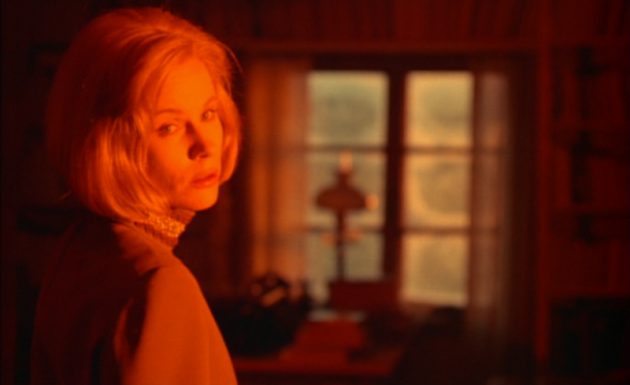
The Passion of Anna
With his genius for projecting faces especially through close-up shots, Bergman brings out the impossibility of a truthful relationship existing beyond conflicts. Our obsession with autonomy is mocked by an emotional need to depend on another person for solace and company. While the dependence is utterly humiliating, the freedom is a reminder of one’s dreadful, banal existence. The insulted and the humiliated happen to use “freedom” as a drug in order to make life bearable to themselves. Should that freedom really matter if we are caught up with time passing by monotonously, sandwiched between daylight and darkness, our sleep filled with dreams? Andreas’ predicament is the dilemma of the human person trapped in his or her own thoughts. This is true of Prof. Isak Borg as well as his son Evald in Wild Strawberries – both of whom must finally confront their vulnerability in the face of people who love them and who they love without daring to admit it to themselves or to the other person. It is a moment of coming out of a life-long dedication to isolation and loneliness that plagues Prof. Borg in dreams where he sees himself as an old dying man in a coffin.
“You see, Marie, you have to build a wall around you protecting you from sorrow” says the cynical uncle to the broken-hearted girl who lost her lover Henrik to an accident that killed him. In the end the recognition dawns upon Marie that, “the walls we’ve build around us are falling apart” and what remains “is a cold and shivering being.” Feelings cannot be protected and what instead remains is a mental notion of what feelings are all about. The very nature of human feelings binds one intricately to the lives of others around oneself. If there is a price to pay for acknowledging the truth about one’s feelings, it is imperative to note that we cannot think of art and aesthetics without placing them at the center of one’s humanity. If feelings engender fear of suffering and confusion not to mention the possibility of being taken for granted, we cannot think of individual autonomy except in terms of how one feels with the world around oneself. There is no greater illusion than the false sense of security that comes from building walls around one’s feelings. The face is sooner or later ready to betray the loneliness and frustration of living within the walls of one’s making. For a film maker who invests in looking at the reaction of the human face to inner turmoil, the drama of life is written all over the face; people suffer and their faces are evidence of the suffering written on them.
If to feel is to suffer the weight of frustration that comes with feeling, not to allow oneself to feel is to suffer in meaningless isolation. The “cold and shivering being” does not disappear merely because one is hidden behind secure mental walls that promise safety without the assurance of ever finding love or happiness. Interestingly, the walls do not alter the past; the wounds are exactly as they were when last seen; that is where Marie has to begin in Summer Interlude (1951) and that is the more or less the plight of Eva when she confronts her aging mother in Autumn Sonata (1978):
What a terrible combination of feelings and confusion and destruction. Everything is possible and is done in the name of love and solicitude. The mother’s injuries are to be handed down to the daughter. The mother’s failures are to be paid for by the daughter. The mother’s unhappiness is to be the daughter’s unhappiness. It’s as if the umbilical cord had never been cut.
As much as we like to believe that we have moved on, the “umbilical cord” that connects one with the past “had never been cut.” Old hurts remain and travel down through the unconscious passages of generations; children inherit the anger, pain and disappointment of their forebears only in turn to make life miserable both for themselves and those around them. In Bergman, we see a dark, pessimistic vision of the psychological traps in which most people voluntarily lock themselves up because it is easier or rather convenient to feel protected within a cage rather than face the world outside oneself. A secure sense of unhappiness is always better than a non-secure and perhaps risky venture into freedom which could mean happiness but also having to face the truth about oneself. Real life is without comfort zones and the painter Johan Borg in the surreal drama Hour of the Wolf (1968) recollects to his wife a scene from his childhood which gives us an insight into the demons haunting him in the present:
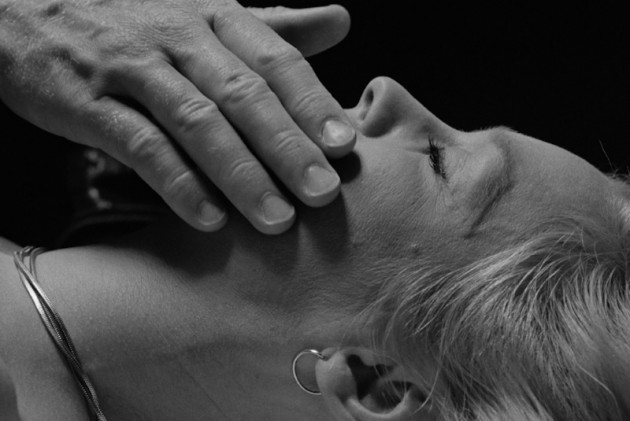
Hour of the Wolf
I was thinking about something from my childhood…I was thrown in the wardrobe…I was insanely scared…They had told me a small person lived in the wardrobe, who could bite away the toes of bad children…I believed my time had come…I fought wildly to keep the creature off me and all the time screaming with fear asking forgiveness!
Emotionally devastated as a child by the violence of the parents and spiritually lost as an adult incapable of making choices towards one’s own happiness and well-being – this is a theme that runs through Bergman’s films. The “insanely scared” person, the “small person” in the wardrobe who punishes bad children and the fighting and the fear makes life an experience of horror. Traumatized to a breaking point, how does one ever become “normal” in a way that acknowledges the meaningful presence of others in one’s life! How does one make oneself believe as an act of faith that there is space for communication! Is it a question of how we use words in relation to our feelings or is it something that is beyond language!
In The Silence (1963) the younger Anna acquaints herself and makes love to a man without speaking the language and the older Ester reveals of her torment to the kind elderly porter who also cannot understand her but is visibly touched on seeing her condition. The silence between the sisters who share a past is filled with anger and bitterness making any understanding of each other impossible. At the same time, both the sisters are able to reach out to complete strangers and evoke strong feelings in them. Ironically, the shared memories instead of bringing them together make the sisters coldly distant from each other to a point where they cannot be in the same place any longer. At the end the dying sister leaves a letter for Anna’s kid Johan in which is written: “words in a foreign language.” The line makes sense because the two sisters despite knowing the language, lived like foreigners unable to communicate; dying in an unknown country and among strangers, Ester, who is a translator, must explore the possibility of whether it is words that failed them or if they failed to communicate.
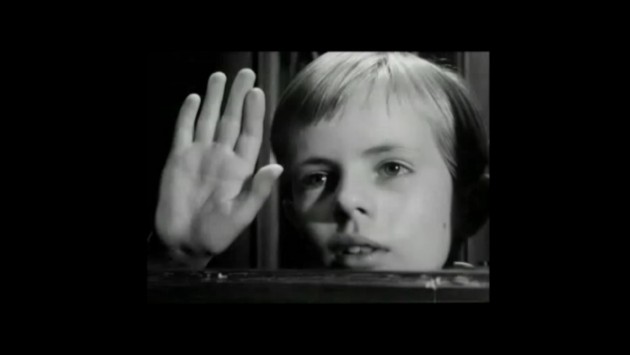
The Silence
Either way it would not matter because it is the language of cinema that speaks through illusion to reproduce the inner workings of the soul. It is the destiny of a great filmmaker to recognize the potential of cinema as art form and technology to give us an idea of what people go through in their inner lives. Bergman’s narratives are not linear in the sense of telling the social history of a nation such as with Buñuel who recounts the inner lives of Spanish-speaking people. The conflicts of the heart that are examined in Bergman’s films are about a political economy at a certain level of development that provides freedom for the evolution of human relationships in certain specific directions. We are not talking about progressing into a non-repressive society because that would be too convenient a fiction and Bergman’s brutal honesty in describing human feelings does not afford such an easy way out to either himself or his audiences. It is about a society where individuals have internalized tendencies or patterns of behavior that make it a formidable task for them to have a realistic appraisal of themselves. It is about people who ultimately must believe in the redemptive power of love and dialogue to find release from the bondage to time as expressed in the consciousness of one’s mortality. This applies to families, friends, individuals caught in moral and spiritual dilemmas or men and women who must work out their true feelings for one another.
Ismael tells the boy Alexander who writes his name on a piece of paper and finds out that it is not his name “Alexander” that appears but that of Ismael Retzinsky: “Perhaps we are the same person. Perhaps we have no limits; perhaps we flow into each other, stream through each other, boundlessly and magnificently” (Fanny and Alexander 199). The real possibility that we are dealing with the “same person,” one being inhabiting two or more individuals, flowing and streaming into each other, without limits, changes one’s perception of the world around. The weight of one’s individuality is limited to choices we make as persons; that, however, does not mean we fetishize the individual at the expense of the relationship; a boundless and magnificent recognition that we share in the beingness of another person eliminates the distinction between two names, Alexander and Ismael, and shows that one is always the other. We are beings in a perpetual state of becoming; while the question of who we are in relation to another person is at the heart of culture, within the flux of time identities are irrelevant and the creative act aims at discovering what is it that brings people together despite the fact that for all practical purposes we are separate from one another. While cinema owing to its power to reproduce the world through the camera both interprets and changes reality, it is also able to bring the audience as close as possible to the image in the process of involving the viewer in what is happening in front of him or her.
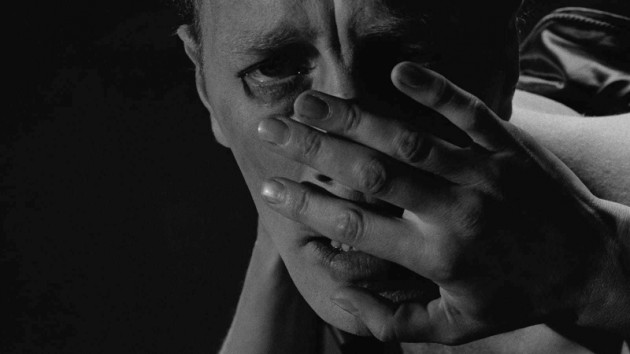
Hour of the Wolf
The aesthetics of cinema is about creating illusions on the screen. The literary qualities of cinema are about showing how things happen rather than just recounting them. Cinema occupies the space that fantasies fill in day-to-day-life. You cannot look for reality in an illusion. An illusion contains and projects its own reality that is strangely superior to the reality that we inhabit as individuals. Things that happen in illusions can produce feelings as real as those we experience in life. With the theoretical clarity of a great filmmaker who understands his tools, Bergman says:
When film is not a document, it is dream. That is why Tarkovsky is the greatest of them all. He moves with such naturalness in the room of dreams. He doesn’t explain. What should he explain anyhow? He is a spectator, capable of staging his visions in the most unwieldy but, in a way, the most willing of media…Fellini, Kurosawa and Buñuel move in the same fields as Tarkovsky (The Magic Lantern 73).
Bergman might modestly exclude himself from the list of great “dreamers” while referring to his work as that of a filmmaker who all his life “hammered on the doors of the rooms in which he (Tarkovsky) moves so naturally” (The Magic Lantern 73). The segment of life Bergman explores in his work is the common world of men and women and their interaction rather than cinema as poetry as in Tarkovsky’s films where images are strung together in a way that enables the audience to effortlessly move through dreamy rooms where one experiences the need to transcend oneself.
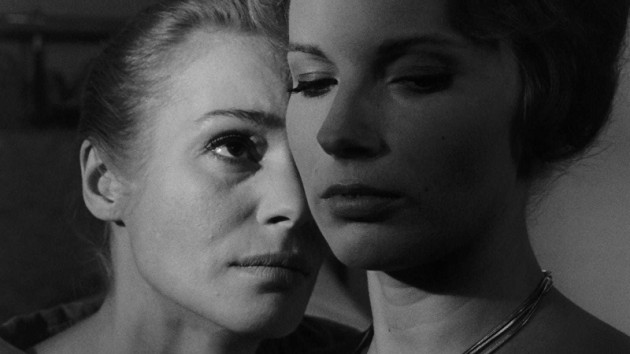
The Silence
While Tarkovsky’s films are about the sacred, Bergman’s cinema is about the profane; it is about people, what they do to each other and what happens to them. St. Augustine and Shakespeare understood what it means for a person to go through conflicting emotions. In the modern world, Dostoevsky and Proust chronicled the dilemmas of the mind and the heart. Among filmmakers no one comes close to Ingmar Bergman in articulating those subtle dream-like moments in which we experience both joy and pain. The most common of human desires is the need to be happy even if happiness is an illusion in the face of mortality. Bergman has infinite empathy for the common need to feel happiness; he does not have an intellectual disdain for people who are struggling to be happy in a child-like way. If happiness is an illusion it is the job of cinema and filmmakers to enable the possibility of happiness through making illusions. The audience needs cinema to feed their illusions, happiness being the most important of them. “There is no better life than this life” says Frid to Petra at the end of Smiles of a Summer Night (1955). Through their tragedies, betrayals and nightmares, people dream of happiness in a finite world where death is real. One cannot reject happiness for being short-lived because by the same argument one can reject life itself. As a philosophy of living what Gustav Adolf says in the epilogue of Fanny and Alexander makes perfect sense: “Therefore let us be happy while we are happy, let us be kind, generous, affectionate and good. Therefore it is necessary, and not in the least shameful, to take pleasure in the little world, good food, gentle smiles, fruit-tress in bloom, waltzes” (Fanny and Alexander 208). A commitment to happiness is a commitment to both love and life. Nothing can alter the fact that as human beings we inhabit “the little world” whether it is in the shape of a family, a group of friends, a neighborhood or strangers we meet in unusual places and in unexpected times. It is in the little world that we dream of finding happiness and in the same world we are supposed to resolve the conflicts of the heart and discover both our true self and the larger meaning of what on earth we are here for. This seemingly modest though extraordinarily profound piece of wisdom Ingmar Bergman gives us through his films.
Works Cited
Bergman, Ingmar. Images: My Life in Film. Translated by Marianne Ruuth, Arcade, 2011.
—-. The Magic Lantern: An Autobiography. Translated by Joan Tate, Penguin, 1989.
Blair, Alan, translator. Fanny and Alexander. By Ingmar Bergman, Pantheon, 1982.
Faulkner, William. “William Faulkner – Nobel Lecture.” nobelprize.org.
https://www.nobelprize.org/nobel_prizes/literature/laureates/1949/faulkner-speech.html
Gado, Frank. The Passion of Ingmar Bergman. Duke University Press, 1986.
Proust, Marcel. In Search of Lost Time Vol I Swann’s Way. Translated by C. K. Scott Moncrieff and Terence Kilmartin, The Modern Library, 1992.
Sartre, Jean-Paul. No Exit and other plays. Vintage, 1989.
Strindberg, August. A Dream Play. Miss Julie and other plays, Translated by Michael Robinson, OUP, 1998, pp. 172-245.
Tarkovsky, Andrei. Sculpting in Time. Translated by Kitty Hunter-Blair, University of Texas Press, 1988.
Bergman Filmography of Films Cited:
Autumn Sonata. Directed by Ingmar Bergman, performances by Ingrid Bergman and Liv Ullmann, ITC Entertainment, 1978.
Face to Face. Directed by Ingmar Bergman, performances by Liv Ullmann and Erland Josephson, Paramount Pictures, 1976.
Fanny and Alexander. Directed by Ingmar Bergman, performances by Pernilla Allwin and Bertil Guve, Sandrew Film and Theater, 1982.
Hour of the Wolf. Directed by Ingmar Bergman, performances by Max von Sydow and Liv Ullmann, Svensk Filmindustri, 1968.
The Passion of Anna. Directed by Ingmar Bergman, performances by Liv Ullmann, Max von Sydow and Bibi Andersson, United Artists, 1969.
The Silence. Directed by Ingmar Bergman, performance by Ingrid Thulin, Svensk Filmindustri & Palador Pictures (India), 1963.
Smiles of a Summer Night. Directed by Ingmar Bergman, performances by Ulla Jacobsson, Eva Dahlbeck, Harriet Andersson and Bibi Andersson, 1955.
Summer Interlude. Directed by Ingmar Bergman, performance by Maj-Britt Nilsson, 1951.
Summer with Monika. Directed by Ingmar Bergman, performance by Harriet Anderson, 1953.
Through a Glass Darkly. Directed by Ingmar Bergman, performance by Harriet Anderson, Janus Films, 1961.
Wild Strawberries. Directed by Ingmar Bergman, performances by Victor Sjöström and Bibi Andersson, AB Svensk Filmindustri, 1957.


_2_400_258_90_s_c1.jpg)
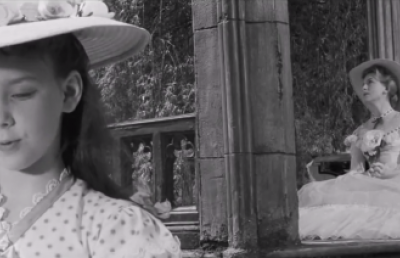

_400_258_90_s_c1.jpg)







